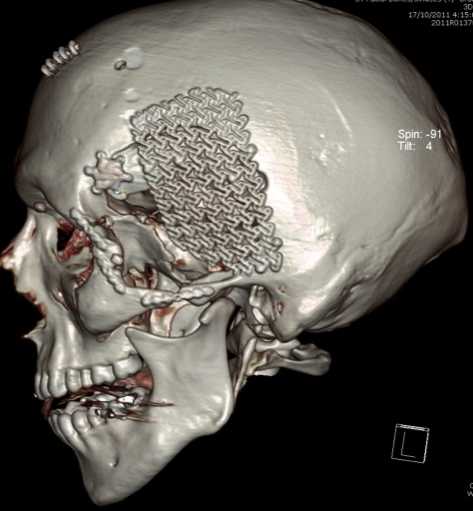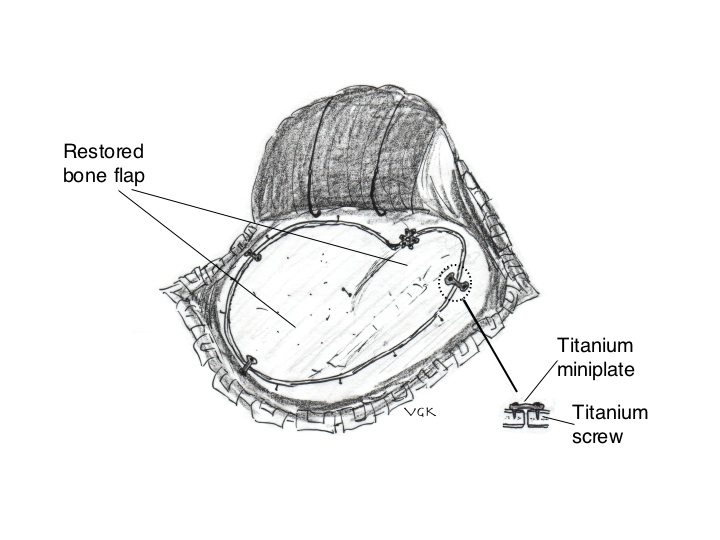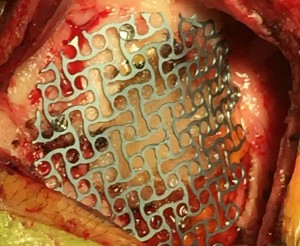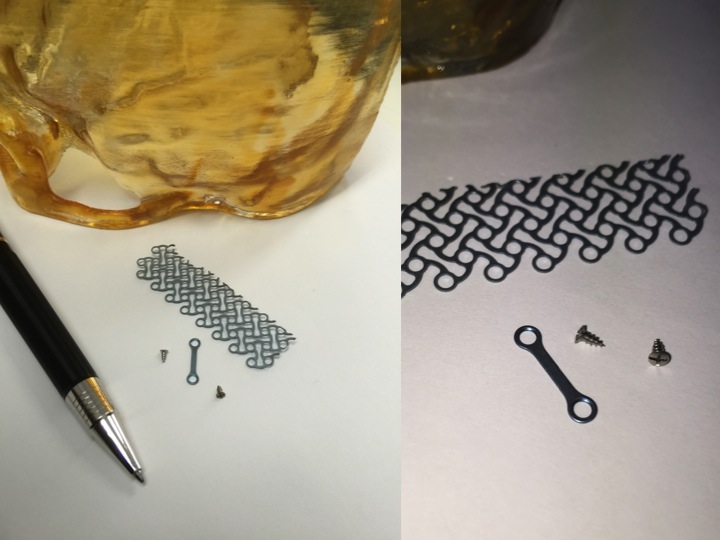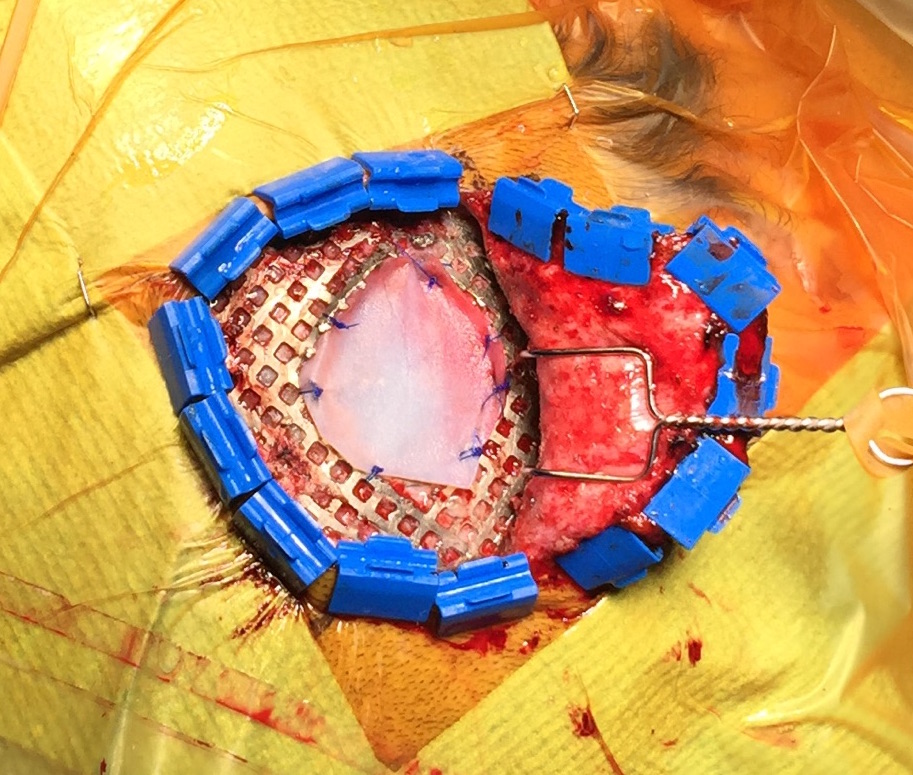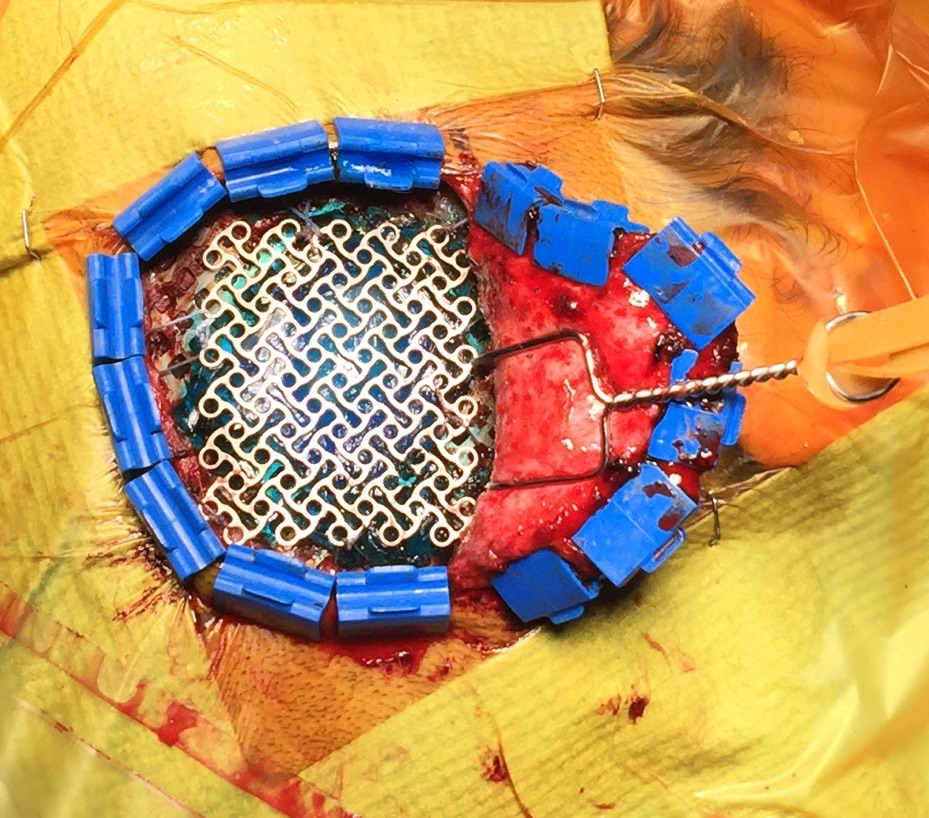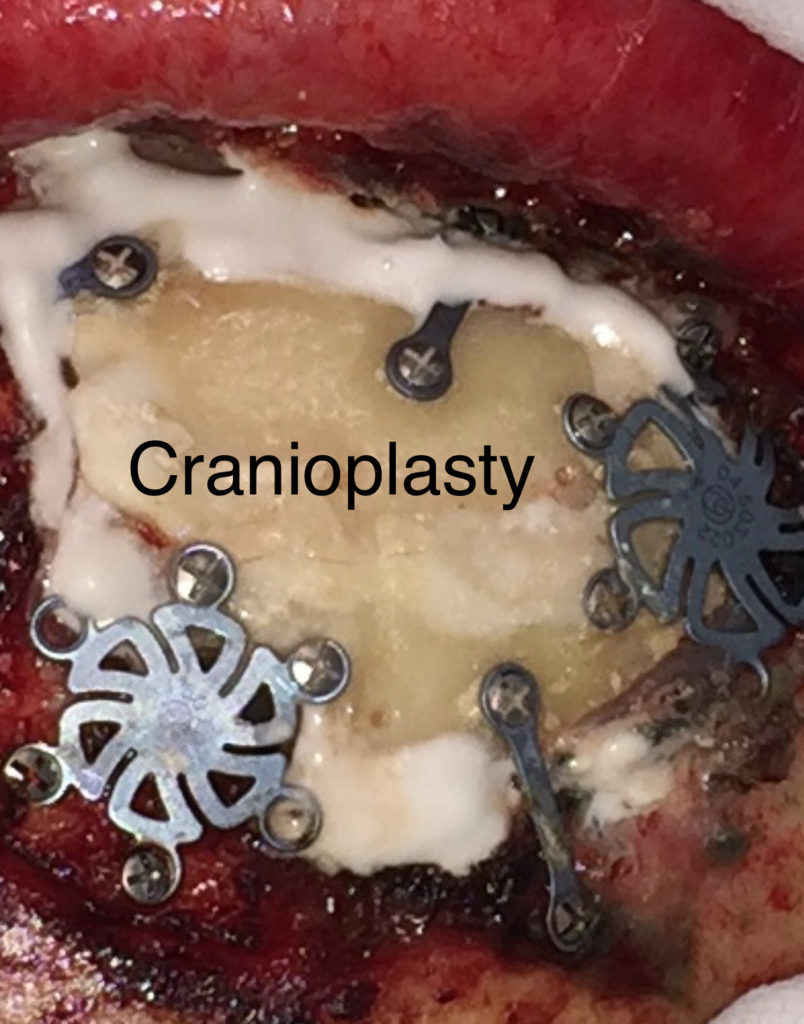Cranioplasty
Welcome to Dr Khurana’s Cranioplasty page.
Images shown here are with the permission of Dr Khurana’s patients, for educational purposes.
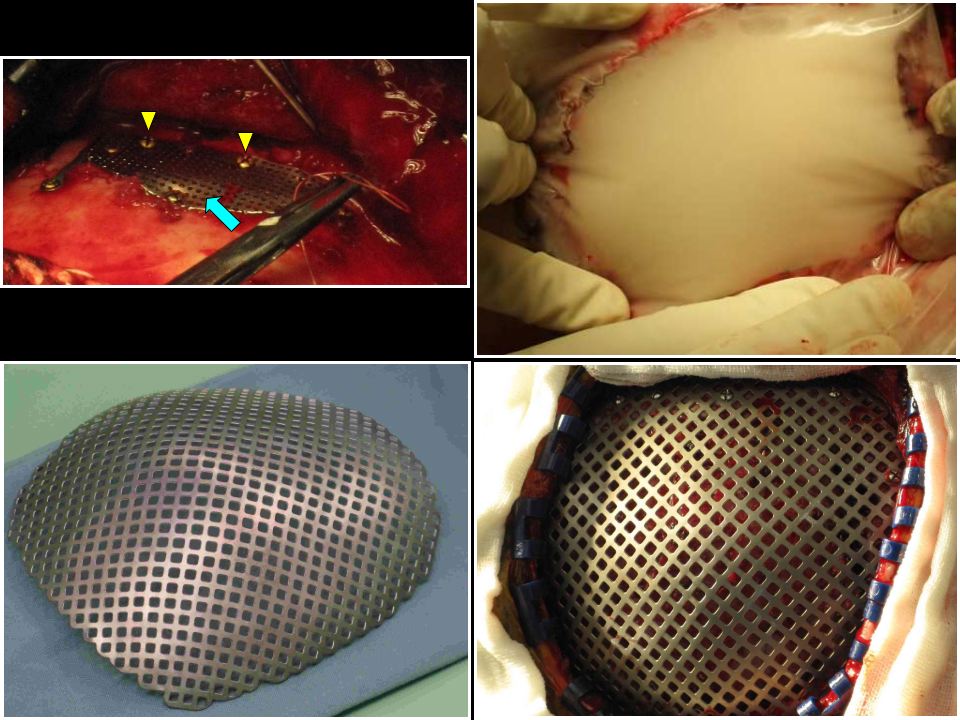
Cranioplasty (collage above) refers to surgical reconstruction of the skull. Some patients present with skull trauma (physical assault, motor vehicle accident, sporting injury) or with tumours or infections involving skull bones. Such patients may need reconstruction of the skull, and this can now be safely and effectively carried out with titanium mesh (Matrix by Synthes, or Timesh by Medtronic) or 3-D printed implants (by Anatomics), or a polymer “bone cement” compound such as Hydroset (by Stryker). Excellent structural and cosmetic results can be achieved with titanium and cements.
Upper left image: A titanium microplate (blue arrow) has been affixed to a defect in this patient’s skull bone via small titanium screws (yellow arrow heads).
Upper right image: In another patient a “bone cement” has been carefully moulded to the patient’s skull contour and used to replace a larger defect in the patient’s skull.
Lower left image: For another patient, a strong titanium plate has been constructed using special CT scan mapping to exactly fit the patient’s skull defect.
Lower right image: The plate has now been screwed into the surrounding skull bone of the patient, and the scalp is then closed over this new strong, cosmetically sound area. The titanium and other modern bone substitutes used in today’s cranioplasty operations are MRI-compatible and don’t set off airport metal detectors.
Other cranial reconstruction images are shown below:
Above image: Complex skull reconstruction by Dr Khurana and a maxillo-facial surgeon in the setting of head trauma.
The images below show complex reconstruction of the scalp and skull with artificial dura (Durepair duraplasty, by Medtronic) embedded within a previous titanium mesh cranioplasty (by Anatomics) and overlaid by Tisseal glue (blue) and a second titanium mesh (Matrix, by Synthes) in a brain cancer patient who has been operated numerous times over the years, in order to keep him alive.
A large and aggressive cancer was removed by me through a small forehead incision and this is the cranioplasty (Hydroset, Synthes Matrix) that overlies the the duraplasty (Durepair, Duraseal).
Click images to enlarge
